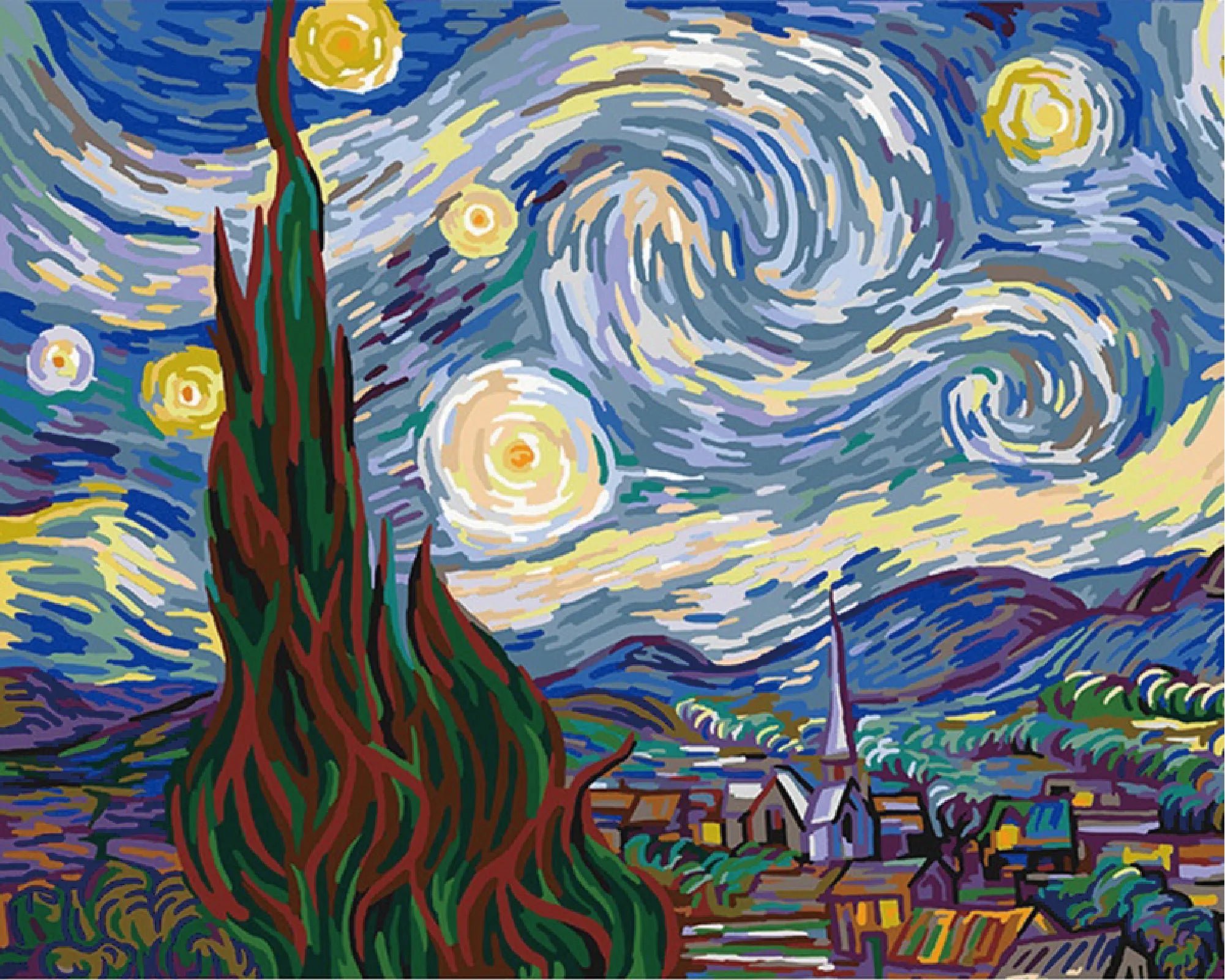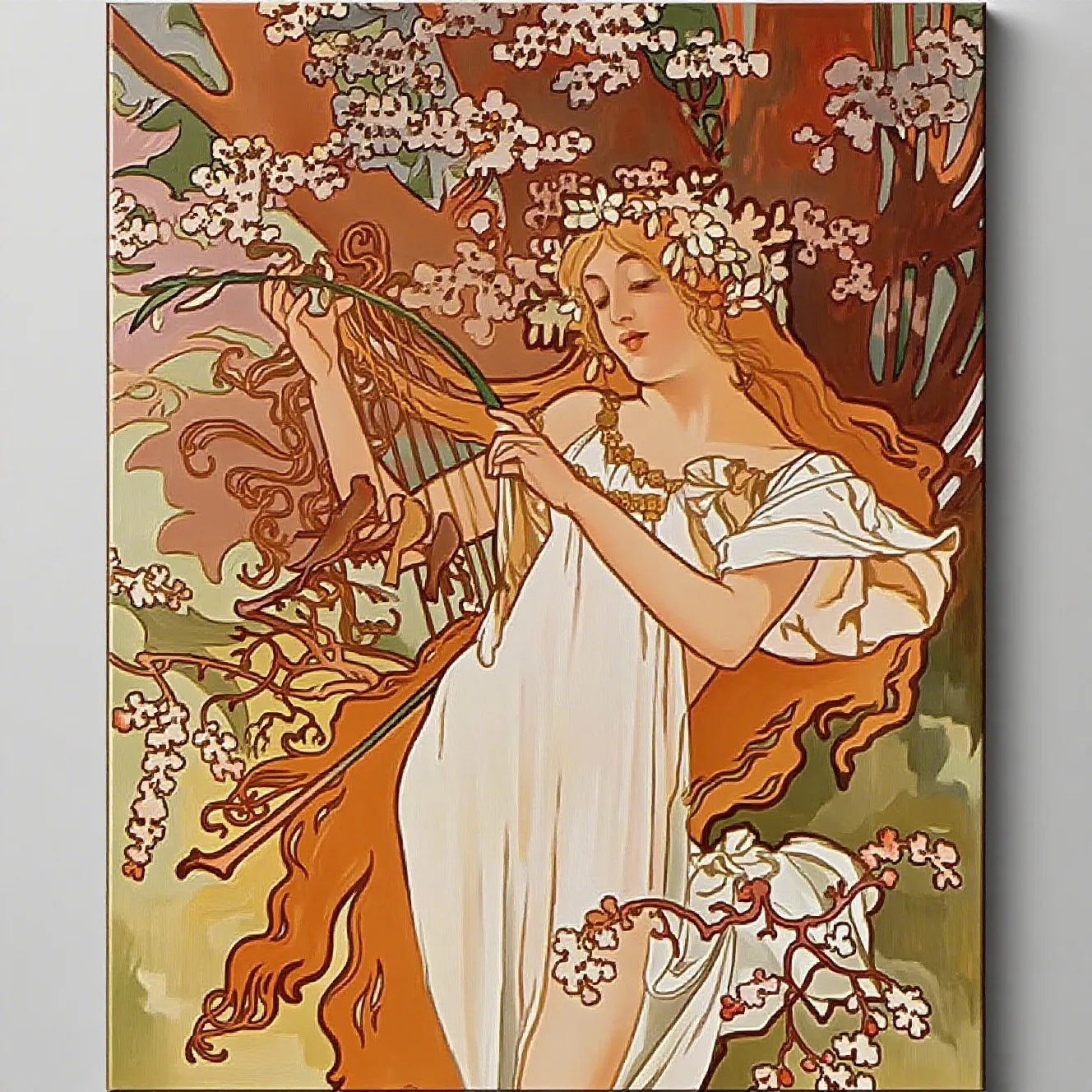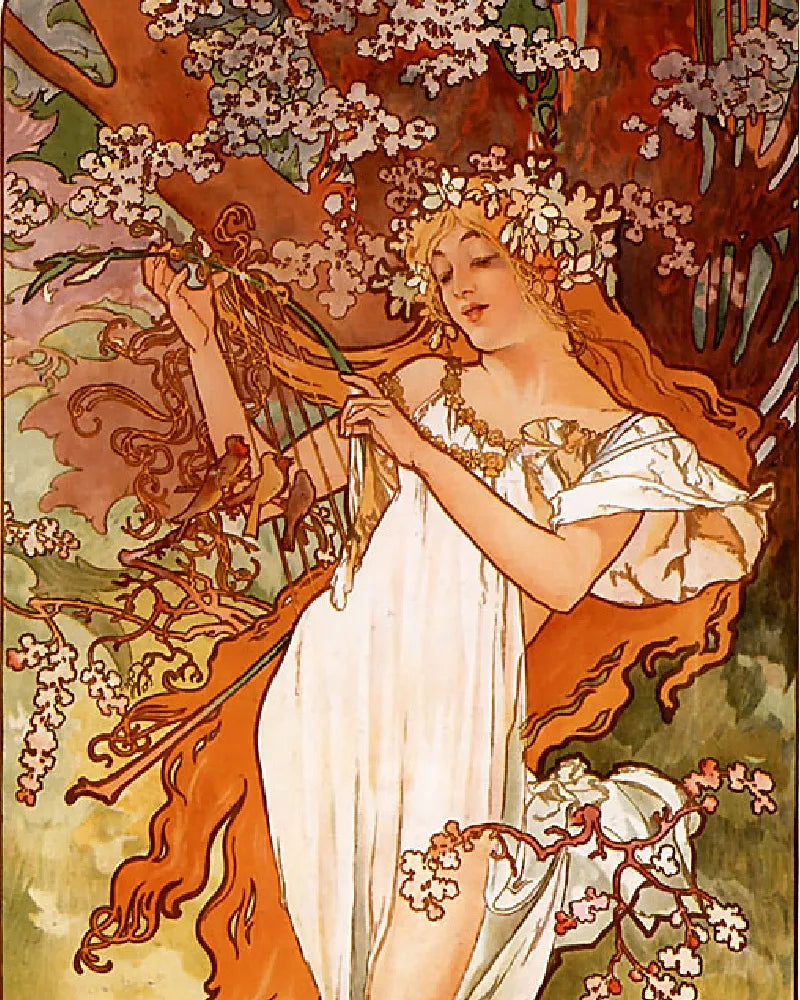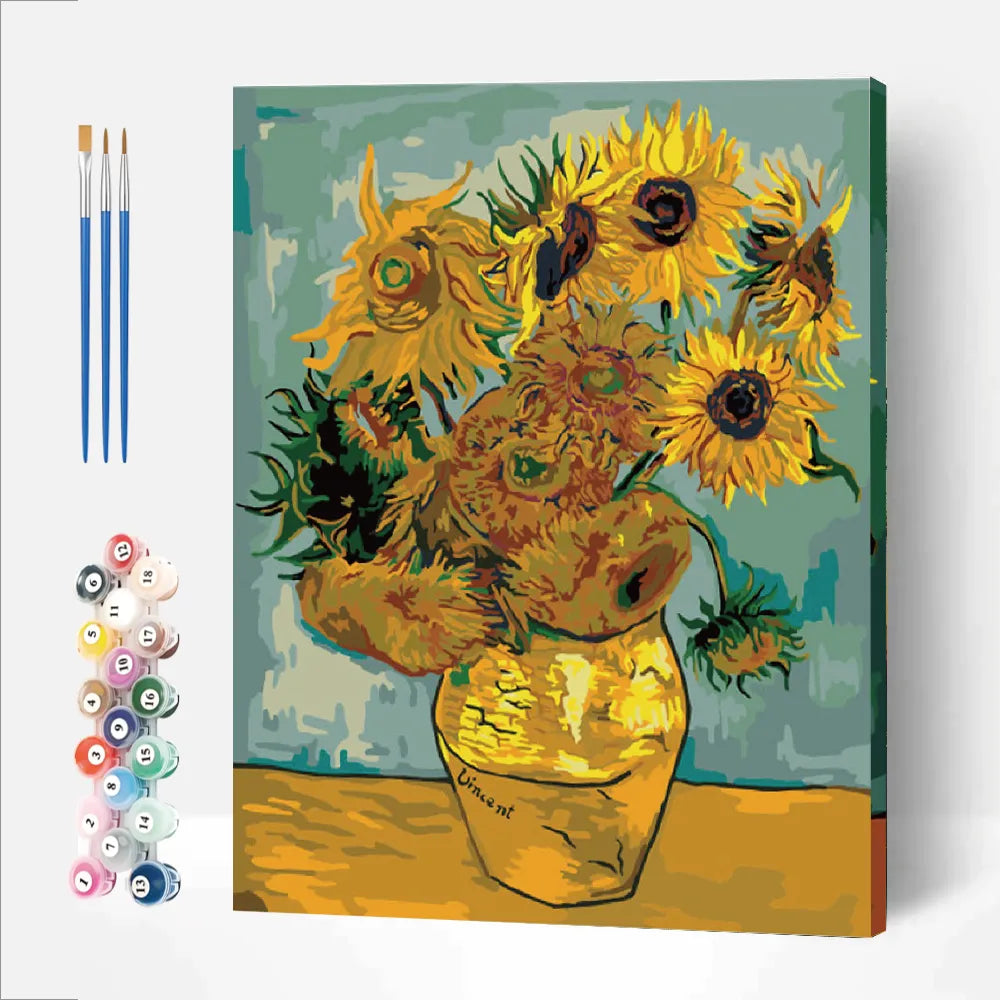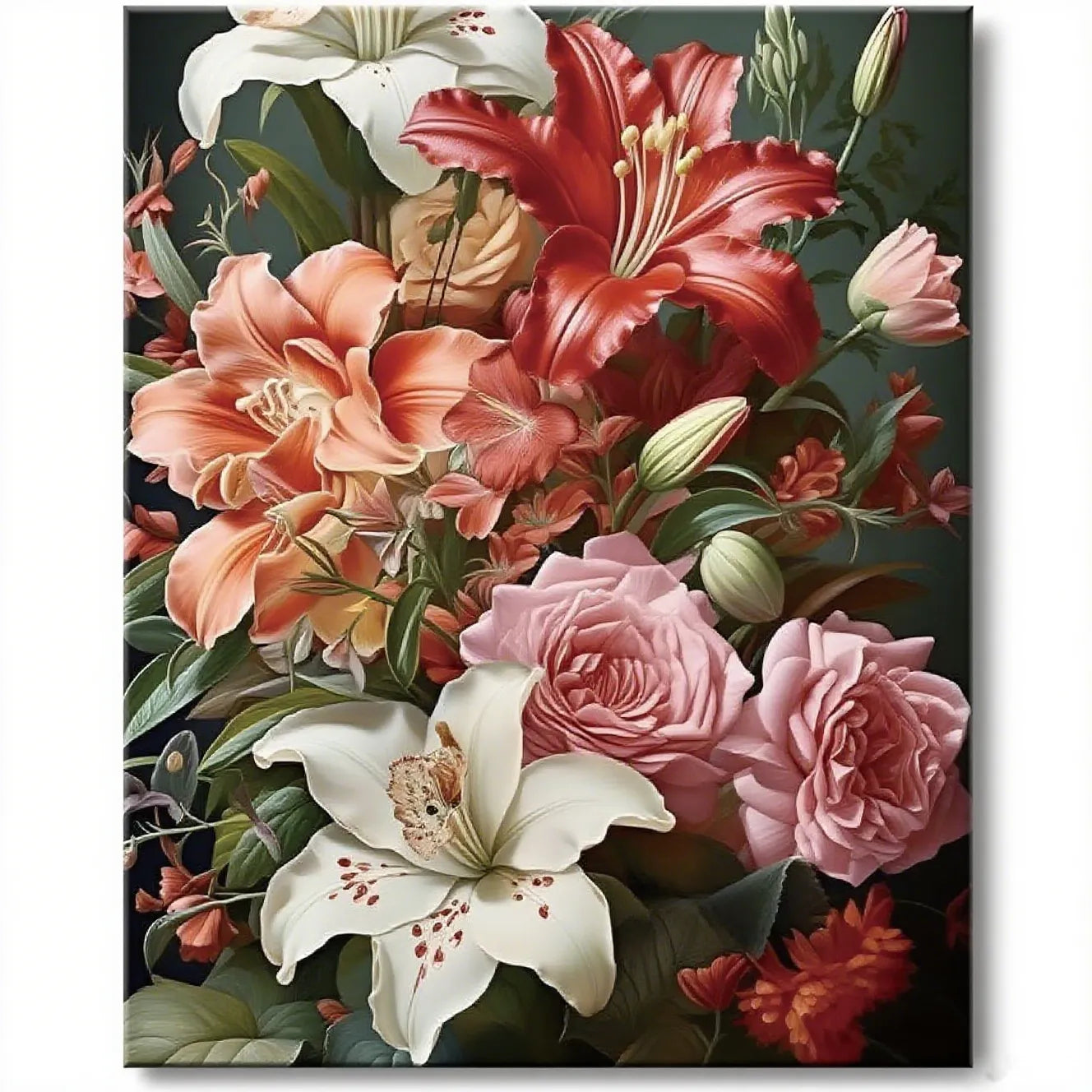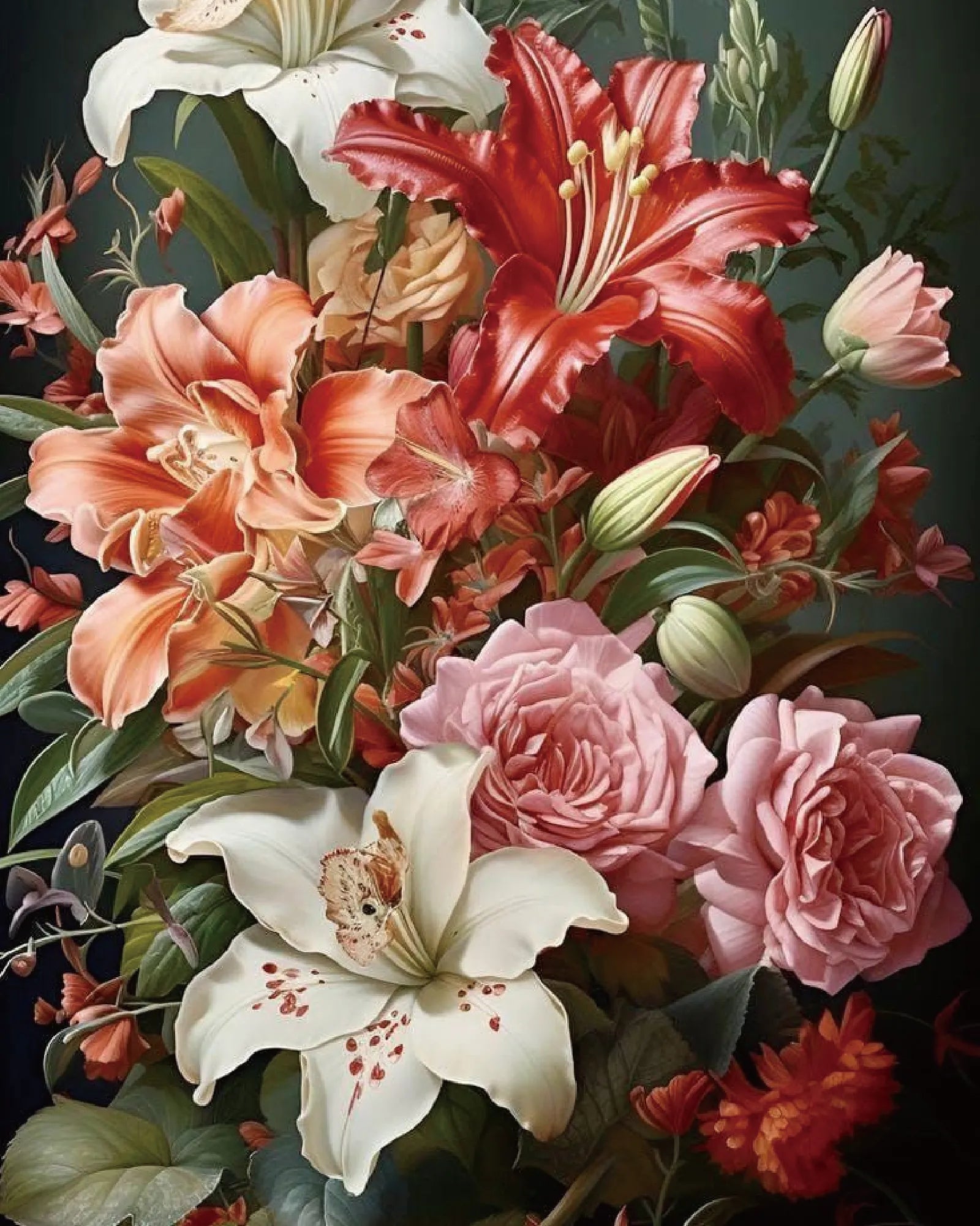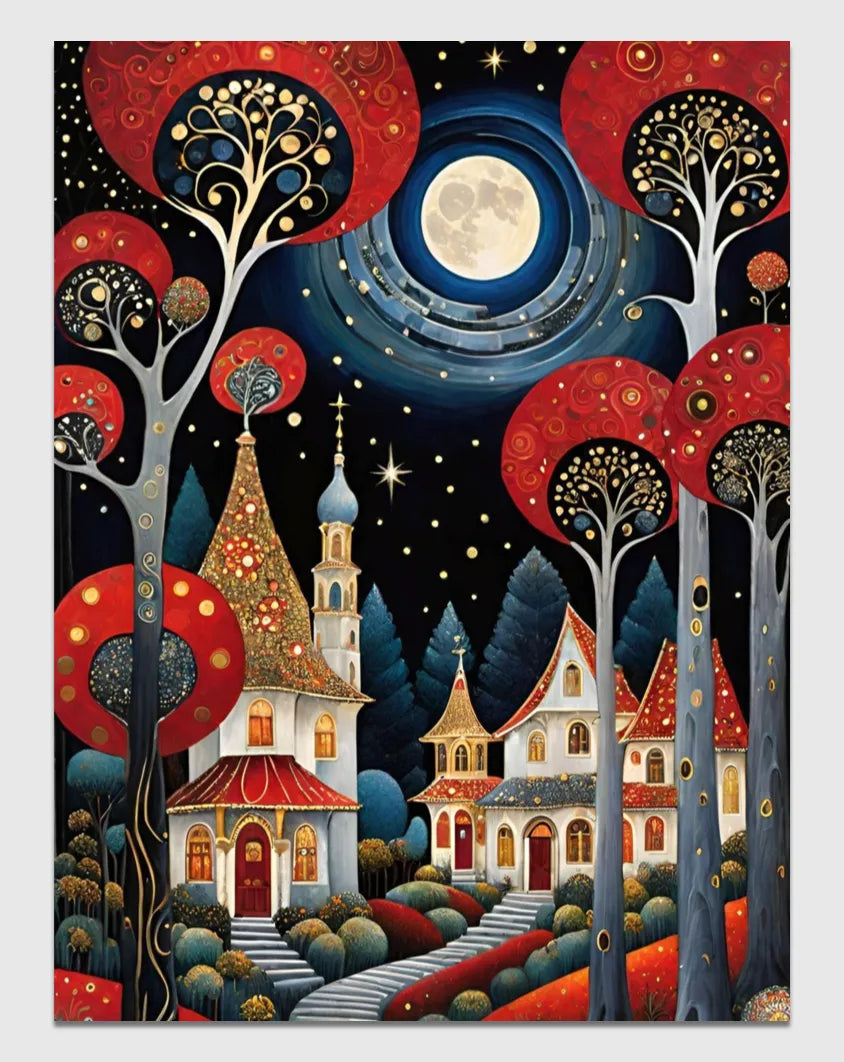Motherly love remains one of the most sincere and enduring human emotions. No matter the era, mothers have always stood as the unwavering guardians of their families and society. As Mother’s Day approaches, we invite you to revisit timeless masterpieces that not only serve as iconic “motherhood pictures” but are also celebrated as some of the most renowned “Mother's Day famous paintings.”
In this article, we take you on a journey through 10 magnificent famous paintings that highlight the beauty of maternal love. Each section delves into the artist, the time of creation, the historical context, and the lasting influence of these famous paintings.
Table of content
-
1. 10 Magnificent Famous Paintings:
- 1.1 Madonna of the Meadow — Raphael
- 1.2 Virgin of the Rocks — Leonardo da Vinci
- 1.3 Doni Tondo (The Holy Family) — Michelangelo
- 1.4 Madonna and Angels — Fra Filippo Lippi
- 1.5 Madonna of the Pomegranate —Sandro Botticelli
- 1.6 Madonna and Child — Titian
- 1.7 Apple Madonna — Murillo
- 1.8 Madonna and Child — El Greco
- 1.9 The Bath — Mary Cassatt
- 1.10 Mother and Child —Gustav Klimt
- 2. Conclusion
- 3. How About Crafting a Personalized Painting for Mom?
10 Magnificent Famous Paintings:
Madonna of the Meadow — Raphael
During the Renaissance, religious themes dominated European art. Raphael’s Madonna of the Meadow reinterprets the traditional theme of the Madonna and Child with delicate, soft brushstrokes that underscore the sanctity and warmth of maternal love. This painting not only reflects the evolution of humanistic thinking but also epitomizes the deep connection between religious art and everyday life.
Renowned for its rigorous composition and gentle color palette, Madonna of the Meadow has had a profound influence on later interpretations of the Madonna theme. Raphael’s mastery of proportion and spatial composition paved the way for future generations of artists, cementing its place as one of the most admired “Mother's Day famous paintings.”

Virgin of the Rocks — Leonardo da Vinci
Virgin of the Rocks is not only a religious artwork but also a celebration of the mystical beauty of nature. Da Vinci meticulously crafted the rock formations and natural scenery, giving the age-old Madonna theme a refreshing visual interpretation. This work bridges the realms of religious aesthetics and natural science, embodying the Renaissance ideal of balancing rationality with emotion.
With its masterful use of composition, chiaroscuro, and layered imagery, this painting served as an inspiration for countless subsequent oil paintings. Celebrated as a definitive “Mother's Day famous painting,” it stands as a classic representation of “motherhood pictures” in art history.

Doni Tondo (The Holy Family) — Michelangelo
As one of the icons of the Renaissance, Michelangelo portrayed the Holy Family in a uniquely intimate and dynamic way. His depiction of the maternal figure radiates both religious devotion and gentle humanity, allowing viewers to feel the palpable warmth of a mother’s love.
The Doni Tondo impressed audiences with its dynamic composition and mastery of human form, providing inspiration for later Baroque artists. Its depiction of maternal affection has cemented its place in the pantheon of “motherhood pictures” and established it as a beloved “Mother's Day famous painting.”

Madonna and Angels — Fra Filippo Lippi
Focusing on the tender imagery of the Madonna with the Christ child, the painting is enhanced by the delicate presence of two angels. It captures both the divine nature of the subject and the soothing, heartfelt warmth of maternal care. This artwork embodies the perfect fusion of Renaissance humanism and religious sentiment.
Noted for its innovative use of color and delicate handling of emotional nuance, Madonna and Angels has deeply influenced contemporary depictions of the maternal figure. This work remains an essential study in “Mother's Day famous paintings” and redefines what it means to be “mother famous” through art.

Madonna of the Pomegranate —Sandro Botticelli
Botticelli ingeniously incorporates the pomegranate—a symbol of life and rebirth—into the depiction of the Madonna, thereby infusing the painting with layers of symbolic meaning. In Christian iconography, the pomegranate represents regeneration and eternity. The painting’s warm hues and elegant forms convey a sense of poetic mysticism and reverence for maternal love.
The innovative composition and symbolism in Madonna of the Pomegranate not only influenced later generations of religious painters but also solidified its reputation as a classic among “motherhood pictures.” Its effect has endured, resonating deeply during Mother’s Day celebrations as one of the treasured “Mother's Day famous paintings.”

Madonna and Child — Titian
Titian’s rendition of the Madonna and Child is celebrated for its exceptional treatment of light and color. The rendering of the mother's tender gaze and the child's innocent expressions conveys an intimate moment of familial affection. This work epitomizes the sophistication of late Renaissance religious art and provides a heartfelt tribute to maternal love.
With its revolutionary use of light and vibrant color, Titian’s work influenced countless artists, cementing its status as a benchmark in the portrayal of familial bonds. It remains a source of endless inspiration in the world of “motherhood pictures” and is frequently celebrated as a “Mother's Day famous painting.”

Apple Madonna — Murillo
In Apple Madonna, Murillo employs a soft palette and warm lighting to create a serene and intimate environment. The image of the Madonna cradling the infant amidst the subtle symbolism of apples conveys dual themes of temptation and salvation, suggesting that a mother’s love not only nurtures but also offers hope and redemption. This harmonious blend of daily life and divine grace struck a chord with contemporary audiences.
The emotional depth and visual serenity of this painting had a lasting impact on the Baroque period and beyond. Widely admired and frequently referenced during Mother’s Day celebrations, it stands as an evergreen “motherhood picture” and one of the most memorable “Mother's Day famous paintings.”

Madonna and Child — El Greco
This painting blends the spiritual mysticism of Byzantine art with the realism of the Renaissance. El Greco’s rendition is marked by expressive lines and bold, almost exaggerated colors that vividly convey both the fervor of religious devotion and the gentle warmth of a mother’s embrace. It reflects the contemporary religious reforms in Spain and the profound reliance on maternal imagery as a source of salvation.
El Greco’s innovative style not only established his own legacy but also laid the groundwork for later movements such as Expressionism and Surrealism. Continually reinterpreted by modern artists, this work remains a steadfast pillar among “motherhood pictures” and one of the enduring “Mother's Day famous paintings.”

The Bath — Mary Cassatt
In a field dominated by grand historical and religious narratives, Cassatt focused on everyday family scenes. The Bath captures a tender moment between mother and child, highlighting the everyday ritual of care and nurturing. Her sensitive brushwork and masterful handling of natural light evoke the serene intimacy found in maternal relationships, making the piece a favorite in households and art discussions alike.
Mary Cassatt’s compassionate representation of domestic love broke new ground for art by elevating the portrayal of familial intimacy. Her work became a touchstone for the theme of “motherhood pictures” and is cherished as one of the most touching “Mother's Day famous paintings,” celebrated for its emotional resonance across generations.

Mother and Child —Gustav Klimt
In this work, Klimt combines the use of gold leaf with intricate decorative patterns to create an image that is both luminous and mysterious. The interaction between the mother and child is rendered with symbolic nuance, emphasizing the perpetual cycle of life and the unbreakable bonds of love. By merging tradition with modernity, Klimt’s innovative approach infused new vitality into the depiction of maternal themes.
Mother and Child is celebrated as a standout example in the category of “Mother's Day famous paintings.” Its inventive use of decoration and symbolism not only redefined the concept of motherhood in art but also inspired generations of artists to embrace a more personal and emotive portrayal of family life, solidifying its status as an eternal “motherhood picture.”

Conclusion
Throughout history, artists have sought to capture the essence of maternal love—a love that is both transcendent and deeply human. Whether it is the tender spirituality of Raphael’s Madonna of the Meadow or the innovative symbolism of Klimt’s Mother and Child, each of these masterpieces offers its own unique window into the perennial beauty of motherhood. They are more than just art; they are timeless famous paintings that testify to the enduring power of a mother’s embrace, celebrated each year on Mother’s Day.
As we marvel at these “motherhood pictures” and cherish these “Mother's Day famous paintings,” we are reminded that art has the unique ability to immortalize our deepest emotions, transforming fleeting moments into eternal treasures.
How About Crafting a Personalized Painting for Mom?
At 1001 Canvas, we believe that the joy and personal connection found in these masterpieces can also inspire your own creative journey. Inspired by the timeless beauty of motherly love depicted in the classics, our passion for art has driven us to offer innovative ways for you to celebrate and recreate these cherished moments. With our paint by numbers and custom paint by number services, you can turn your favorite memories and images into beautiful, personalized artworks. Whether you’re looking to decorate your home or create a heartfelt gift for Mother’s Day, our services allow you to transform your images into a canvas masterpiece that echoes the spirit of these legendary “Mother's Day famous paintings.”Embrace your creativity with 1001 Canvas, and let every brushstroke tell your own story of love, inspiration, and art.


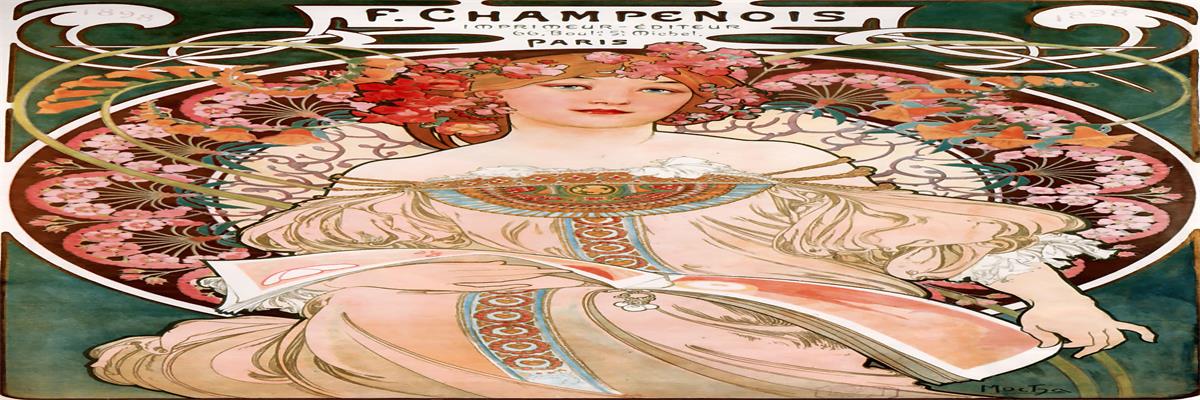
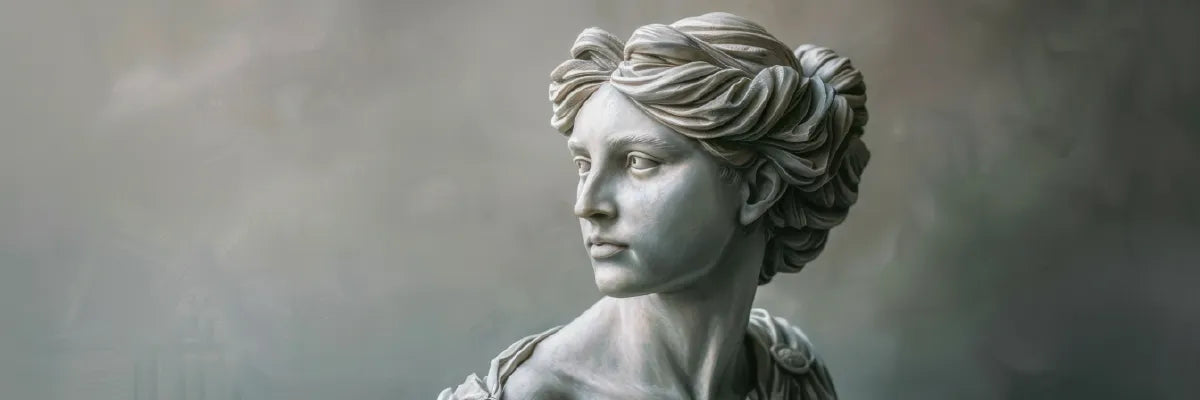


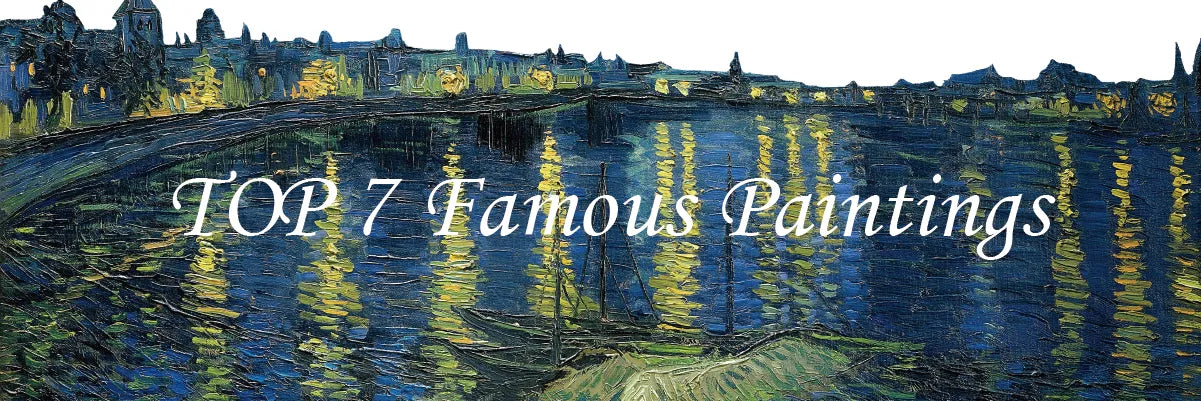

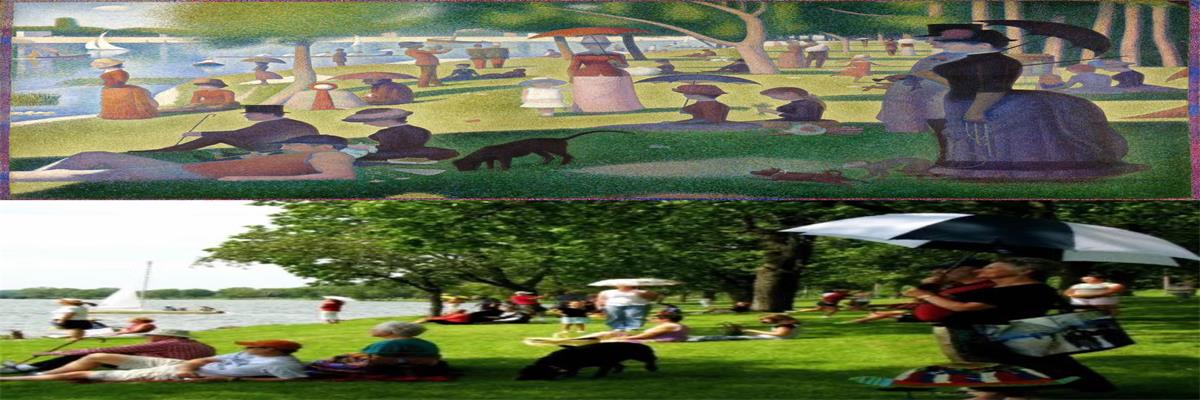





 https://1001canvas.com/blogs
https://1001canvas.com/blogs


